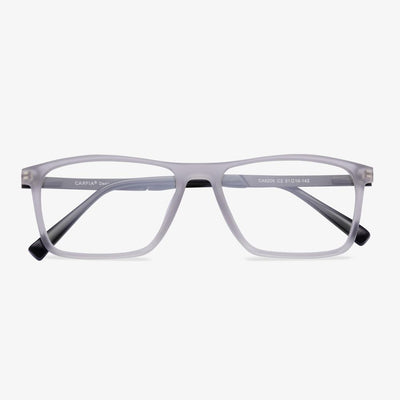What To Do with Old Glasses?
You can also choose to send your old glasses to others. You can ask your friends or ask around your social network to see if someone needs a pair of glasses. Then give them the old glasses.
If your glasses are too broken to be redistributed, do not just throw them out. You can choose to throw your old glasses into the recycle bin and they will be recycled.
If the only reason to give away your old glasses is that they are broken, you can try to repair them. After that, they can be useful.
Who are suitable for progressive lenses?
A progressive piece is suitable for most old people to wear. The proper person is the one who has the visual needs of the long, medium and short distance cares about beauty, and is willing to accept new things. In order to avoid binocular vertical prism differences, for the wearer whose equivalent spherical lens with anisometropia is more than 2D, especially if the difference in refractive power of the vertical meridian is more than 2D, it should be checked with caution. Opticians whose vision needs do not match the progressive lens design, like dentists, often experience blurred vision when working with the far side of the lens to look closer.
There are three processes for resin-changing lenses.
The incorporation method, known as bulk polymerization, is similar to the method of glass lens, that is, one or more photochromic dyes are directly incorporated into the polymer monomer of the substrate for bulk polymerization, and the lens formed after curing will change color. Discoloration dye is completely integrated into the resin lens substrate, so the lens made of color persistence is very good.
The uniformity of discoloration and the depth of color after discoloration are highly related to the thickness of the lens. Because the thickness of the lenses at all levels is different, there will be a color difference between the depth of discoloration and the uniformity, and the uneven phenomenon of high brightness is more obvious.
The film type is known as the coating method. It is the chromatic resin lens by coating or dipping in a layer of chromatic dye on the base of the resin lens. Because the coating covers the surface of the lens, the color uniformity is good. The coating, which is only about 0.05mm thick, does not provide enough molecules to make the lens dark enough, so the color is relatively less dark, and the discoloration lasts slightly longer.
Infiltration, known as the penetration method, is to use the principle of penetration, through the thermal diffusion method to make the color dye permeate the surface of the resin lens sheet material, with diffusion depth up to 0.15~0.20mm. The lens has a constant color change characteristic. There will be no inconsistency between the center and the surrounding color as the luminosity gets darker. The color-changing resin lens made by infiltration type has the benefits of uniform color-changing, small color difference, fast and thorough color-fading, which is the mainstream of color-changing technology at present.
Polygonal frame
Polygonal glasses frame is derived from square glasses frame. Some of the frames belong to mechanical cutting, and the lens has an exquisite diamond design, very popular with consumers. The irregular frame makes the glasses more angular and makes the frames less monotonous. It's more stylish and trendy. Gold is more popular, but the price is not high.
Pure Titanium Glasses Frame Brand - Perspicilla
Perspicilla is a company specializing in the business of myopia frames, pure titanium frames, optical shops, titanium glasses, and other products.It is a limited liability company and has professional design and production of different styles of 3D glasses.It is a professional product design company.The wonderful design team and professional production team hope to bring customers the most satisfactory products.In the production of the product, the brand adheres to the perfect integration of progressive technology and high-quality raw materials, so its single product not only has excellent quality, and comfort is done well.
Aluminum Night Driving Glasses
These night vision glasses feature advanced HD technology. The aluminum frame is lightweight, allowing you to comfortably wear your driving glasses and reduce glare for safe driving. Because the lenses are yellow, these glasses act as night vision goggles to reduce glare, reflections, and their negative effects, while improving and brightening the visual area. Polarized lenses have a special anti-reflective coating that eliminates intense reflected light and reduces glare and scattered reflections. They can double as day and night glasses, improving clarity around the clock.
Transition Lenses Problems
It is not convenient to rely on photochromic lenses when driving. It also may be unsafe if the driver depends on the prescription to see or is legally bound to wear prescription lenses when driving.
Besides, transition lenses are typically the size and shape of regular vision-correction lenses, which allows them to accurately correct the field of vision, but does not account for peripheral areas on either side of the visible range. Sunglasses operate by maintaining very dark glasses that expand over the field of vision and the peripheral with large, oblong lenses that block sunlight from both the front and sides. However, transition lenses are not typically dark enough for heavy sun and cannot block light penetration on the peripheral, leading to people having to resort to sunglasses again.
Of course, there are some benefits of transition lenses and you can click here to learn more.











































